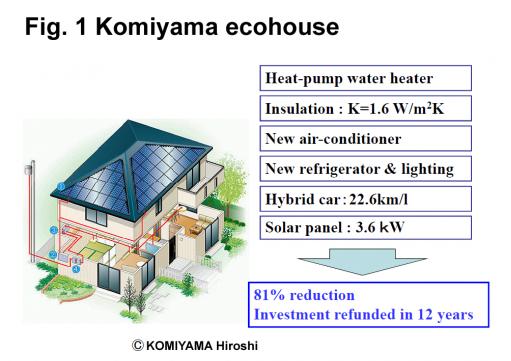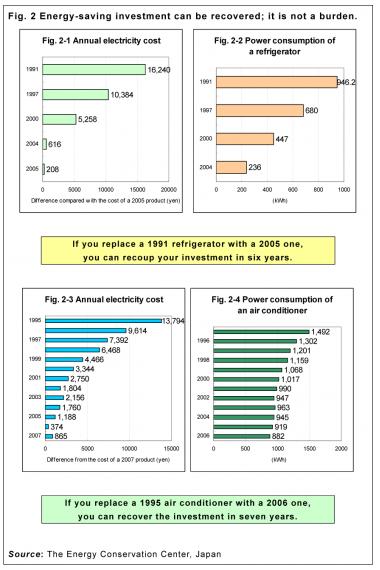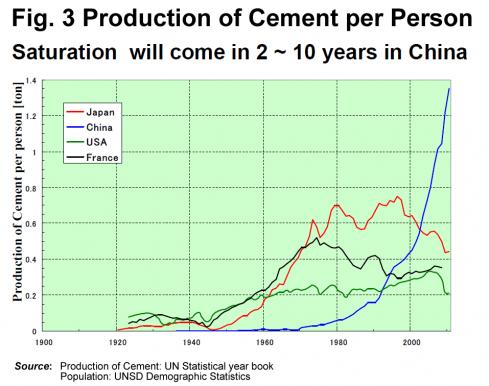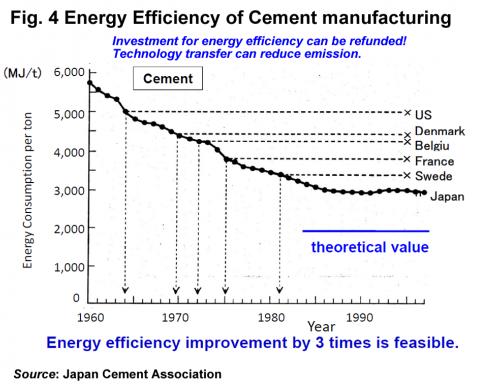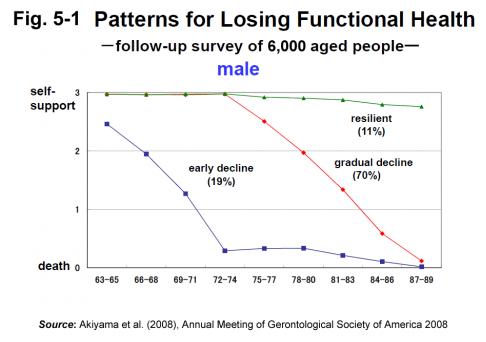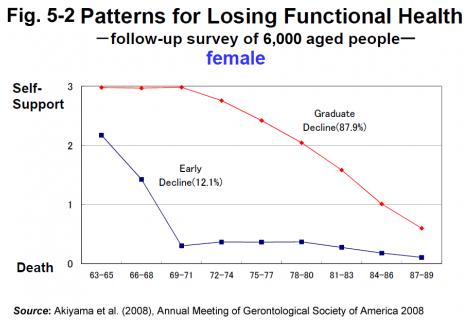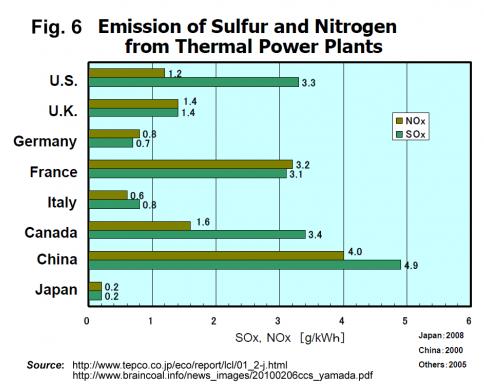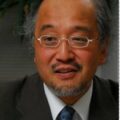TIME TO RECREATE JAPAN THROUGH GREEN AND SILVER INNOVATION
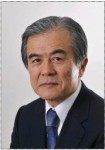
Komiyama Hiroshi
Japan Echo Web: Could you tell us about the background for considering revitalization of Japan?
Komiyama Hiroshi: When I consider the revitalization of Japan, I look at Japan’s historical position. Japan was a world industrial power in the sixteenth century. From the seventeenth century industrialization paused, while institutions and culture developed.
Oda Nobunaga conquered a large part of Japan using his musketeer corps during the era of the provincial wars, which lasted over a century from the end of the fifteenth century. With its firearms, Nobunaga’s army shows that Japan had established a unique weapons production system and succeeded in industrialization, or weapons development, in just thirty years or so after firearms were introduced from Europe. At that time, Japan certainly was an industrial power. Japan was unified in the seventeenth century and entered an era of isolation, which lasted until the middle of the nineteenth century. During that period, the emphasis was on social infrastructure, institutions, and culture, rather than on industry. Japan saw a flourishing of education, especially in hanko, or schools for the children of samurai, and temple schools, a system for transmitting information using express messengers, and culture consisting of a range of activities such as woodblock prints and art of austere beauty and elegant simplicity.
In the West, meanwhile, the Industrial Revolution and explosive industrialization were taking place. Industrialization arrived at Japan in the form of the Black Ships in the mid-nineteenth century. The Edo period ended, and the Meiji period began. Pursuing industrialization, Japan desperately followed Europe and the United States and became the first developing country to catch up with advanced countries in terms of GDP through its industrialization before World War II.
Devastated by the war, Japan recovered rapidly. Excessively rapid industrialization caused environmental pollution, which Japan overcame. Japan handled an oil shock in 1973 and established the world’s most energy-efficient manufacturing and most powerful industry. The average Japanese life expectancy was lower than that in advanced countries in 1950 but by 1970 was the highest in the world.
I believe that Japan was among the first to achieve what advanced countries sought and what developing countries are seeking. In this way, Japan has become an advanced country.
Now Japan is facing new challenges that all advanced countries, or the entire world, will have to address at some point in the twenty-first century. The difference is that we are facing these challenges first.
When I think of the revitalization of Japan, I consider this historical experience.
– What challenges do you think Japan is facing and should resolve to revitalize itself based on your understanding of history?
Komiyama: The first challenge is the explosive increase of knowledge. No one can grasp the full picture of today’s fragmented knowledge and use it wisely. As a result of this explosive growth in knowledge, people cannot make good use of it. It is becoming more and more difficult to optimize knowledge in the field of education and in resolving the range of challenges we are facing. Given these circumstances, it is very important to structure knowledge, that is, to create an overall picture by putting together fragmented pieces of knowledge, like putting together a jigsaw puzzle. The second challenge is global environmental and resource problems caused by explosive population growth around the world. The third is aging populations, currently in advanced countries and soon in developing countries. In the background, there are longer life spans because of improvements in medical care, nutrition, and hygiene, and declining birthrates in advanced countries.
These three challenges–explosive increases in knowledge, limited resources or global environmental problems, and aging society–are the main challenges the world is facing in the twenty-first century. These are the inevitable outcomes of the development of civilization. They have become obvious especially in Japan, which has a vulnerable social structure.
-Japan needs to address these three challenges before other countries. What can Japan do to structure knowledge, or to deal with the explosive increase in knowledge?
Komiyama: As a result of structuring knowledge, I created an ecohouse. When I built my house, I started an energy-saving lifestyle, equipping the house with double insulating glass, solar power generation panels, and a heat-pump water heater, and replacing my old refrigerator and air-conditioner with new models, and my car with a hybrid car (See Fig. 1). I factorized the energy at my house into solar cells, heat insulation materials, water heaters, lighting, a hybrid car, and other factors, and optimized energy-saving functions. Consequently, I reduced my annual energy consumption by 80%. This factorization is not difficult at all.
Japan is an advanced country in terms of energy saving. Japan needs to focus on accumulating knowledge and structuring the knowledge by a factorization procedure, and show concepts that can be used worldwide.
-You believe you can recoup the investment in ecohouses. However, it is generally argued that energy-saving is important, but the cost is the problem.
Komiyama: That is a mistake. The investment in energy saving can be recouped. For example, the power consumption of a refrigerator for household use improved from 946.2 kWh (a 1991 product) to 208 kWh (a 2005 product), and the electricity cost (difference from the cost of a 2005 product) fell from 16,240 yen to 616 yen (a 2004 product). The power consumption of an air conditioner improved from 1,492 kWh (a 1995 product) to 865 kWh (a 2007 product). The electricity cost dropped from 13,794 yen to 374 yen (a 2006 product). The investments in the refrigerator and air conditioner could be recovered in six and seven years, respectively (Fig. 2).
Cement production is one of the symbols of economic development. In the thirty years from 1960 to 1990, Japan halved the energy consumption for cement production by improving the production processes. Energy consumption in Japan now is around 1.6 times the theoretical minimum. Energy consumption in the United States is 1.6 times the energy consumption in Japan, and in China it is 1.7 times. If energy efficiency improves in China, which produces more than half the world’s cement, that will obviously be good for the entire planet. If Japan’s most efficient technology is transferred to China and used in plants there, everyone will benefit from that.
If cement companies in Japan could not recoup their energy-saving investments, then it is doubtful that they really sought to improve energy efficiency. Companies don’t do anything that does not pay. Companies have made initial investments to improve energy efficiency because they expected that the investments would bring them profits. They have made investments because the investments can be recouped (Fig. 3 and Fig. 4).
People invest where they can recoup the investments in five to fifteen years. This is not limited to the cement industry. If the World Bank, Inter-American Development Bank, and Asian Development Bank were to finance these investments, almost all CO2 problems could be solved.
-Let me ask you about global environmental issues, the second challenge, in relation to the previous question. What solutions can Japan present as a nation that lacks natural resources?
Komiyama: Japan can present a solution by seeking to become a self-sufficient country through green innovation by 2050.
At some point in the future, the world will begin to run short of the basic materials for living, including energy, mineral resources, food, wood, and water, and their prices will go up. The price of iron ore has quadruped over the past five years. Grain market prices in Chicago are rising to new highs all through the year.
However, there is an answer to each of the problems.
We can deal with the energy issue by improving energy efficiency, reducing energy consumption, and developing natural energy. We can increase the mineral resources self-sufficiency ratio through recycling. Around 30% of the world’s iron is already produced through recycling, rather than from iron ore. I expect that the major portion of iron will be made through recycling in 2050. Japan has long promoted resource saving and recycling and can be a leader in the recycling of iron and other metals.
We can deal with the food problem in a similar way. Food waste is a big problem in Japan. Japan can achieve a self-sufficiency ratio of 70% in terms of calories by reducing food waste at the consumer level, minimizing loss in the agricultural fields and mobilizing best science and technology in the total food chain. Japan has sufficient forest resources. Annual timber production in Japan is around 100 million m3, which is natural production through photonic synthesis. Of this production, Japan used only 17.8 million m3, or about 18%, in 2009. Since demand for timber in Japan is 64.75 million m3 (2009), Japan can provide the wood it needs and can become an exporter. I talked about timber because Japan could obtain a huge amount of biomass as a byproduct if it revitalized its logging industry. If biomass is produced as natural resource energy on a large scale through mechanization, and if supply chains are developed, that would make a significant contribution to solving the energy problem in Japan. Abundant forests mean abundant water. There are many places in the world where water resources have the potential to trigger conflict. Japan can supply a large amount of water and thereby contribute to solving water-related problems.
Japan imports energy, mineral resources, food, and timber resources. However, as I have just described, there are sufficient, reasonable grounds to believe that Japan can provide these resources for itself. This is the direction in which Japan should go in relation to resources and energy. Japan needs to aim at a self-sufficiency ratio of 70% for energy, mineral resources, and food and a self-sufficiency ratio of 100% for wood and water in 2050.
-What are your views on the aging society, the third challenge in the twenty-first century?
Komiyama: The key phrase here is “silver innovation.” The birth rate has recovered to two in certain countries, including France and northern European countries, but the rate has fallen below two in Germany, Italy, South Korea, and Singapore. Overall, the world’s population is rapidly aging, including the population in China, which has a one-child policy. The aging society is a challenge for all humanity.
A key to solve the problem is gerontological research. Cutting-edge science is shedding light on the process of getting old in terms of substances. Research says that the plasticity of the brain can be observed if five conditions are met: nutrition, exercise, interaction, openness to new concepts, and positive thinking. In the developing nervous system that is creating an optimum processing system in accordance with the environment, the processing efficiency of neuronal circuits that are most often used increases, while the processing efficiency of neuronal circuits that are not often used declines. That is what plasticity is. Recent clinical research has revealed that the plasticity is maintained until two years before death on average and that a person’s knowledge and vocabulary continue to increase until that time. The physical strength of the elderly declines as they get older, but their intellectual ability increases. That finding is very important when we create a concept of a better aging society.
Professor Akiyama Hiroko at the Institute of Gerontology of the University of Tokyo conducted a follow-up survey of 6,000 aged people nationwide for twenty years. In the survey she found that approximately 80% of people are in good shape and can live unassisted until their mid-seventies, but their ability to support themselves begins to decline thereafter (Fig. 5). On average, people’s physical strength declines from the second half of their seventies, but they live until they are about ninety. Around 10% of these people live longer. Some people need long-term care in the second half of their sixties. It is important to try not to fall into that situation. Ms. Akiyama points out that the number of people in their late seventies will double in twenty years. It is therefore important to delay the start of the decline, even if by a couple of years, or to extend healthy life expectancy and to develop social infrastructure to assist elderly people who need support. In other words, the key to a better aging society or a vibrant aging society is to satisfy the five conditions I described for having a happy life in your advanced years.
If your muscles around your knees weaken when you get old, and if you become too lazy to go out, exercise, or go shopping, your social interaction will decrease, and the conditions for a happy life will be lost. There are some solutions. It is possible, for example, to get elderly people to take in essential amino acid, maintain opportunities to interact in society by providing an on-demand bus service, and to use robots to complement declining physical capabilities. Japan can make contributions in manufacturing robots.
The main industry in the twenty-first century, in addition to green innovation, will be created through the development of social systems to support the happy and active lives of elderly people. Japan’s conventional export-dependent industry–importing primary resources at low cost, manufacturing and exporting products, and using the proceeds from exports to buy primary resources–has reached its limits. Japan can show a model to the world by striving to solve problems as a nation that is facing challenges that inevitably await other countries.
-When you take up unprecedented challenges, you always face difficulties and are forced to go through a process of trial and error.
Komiyama: There are excellent initiatives underway elsewhere in the world. As I said, there has been explosive growth in knowledge, and knowledge has become complicated. Regardless of the existence of precedent, what is required in these times is analyzing excellent initiatives by factorizing them and structuring knowledge.
For example, there is a robot called “my spoon” that helps physically challenged people eat a meal. Physically challenged people can use the robot to bring food to their mouth with the spoon by moving a lever and pressing a button. Japanese people are good at manufacturing robots, creating components using materials and incorporating sensors and actuators to assemble the robots.
Although Japanese people excel at manufacturing robots, they are not good at introducing them to the real world. Robots improve productivity but cause job losses. It is therefore not easy to introduce robots to nursing homes and care houses. Europeans are better at solving this difficult problem and using technologies in the real world. Japanese people have much they can learn from Europe. The Japanese and Europeans can learn from each other and build a win-win relationship. Japan can build good relations not only with Europe but also with the United States and Asian countries.
International cooperation is vital. Japan needs to promote the factorization of the problems of aging as open innovation instead of promoting factorization on its own. This factorization could lead to win-win relations.
-Will the innovation automatically improve productivity in the service industry and drive the entire economy?
Komiyama: From the perspective of economics, innovation will raise labor productivity. We need to consider carefully the meaning of an increase in labor productivity. Healthcare costs, which are about 30 trillion yen now, will rise to 100 trillion yen. However, if medical services that people want to pay for emerge, the economy will work. If that happens, the manufacturing sector as a percentage of all industry in Japan will diminish from its current level, 20.3% (2008). The 21st Century Vision that the Cabinet Office put together in 2005 says that the manufacturing industry, which accounted for 24% in 2000, will account for 20% in 2030, while the ratio of non-manufacturing industry will rise from 76% in 2000 to 80%. With respect to the employment structure based on labor income, the ratio of the manufacturing industry will decline from 20% in 2000 to 9% in 2030, while the ratio of the non-manufacturing industry will rise from 80% to 91%. These are natural projections, considering innovation, because an improvement in productivity in the manufacturing industry means fewer jobs to create the same output. As a result, 91% of workers will work in the non-manufacturing industry.
Work sharing could expand. For example, a system where a larger number of people, including elderly people, will teach at schools can be built. In this system eighty-year-old people can teach part-time, a few times a week, at low wages. People who teach in this way will be proud of their work and will find meaning in their life. An industry where people will teach and will be taught will emerge. Only 20% of eighty-year-olds need nursing care. The rest of them lead normal lives, even if they do go to hospital. We need to create a society that enables these people to continue to participate.
I am advocating the creation of a society, which I call “gold innovation.”
As I have described, Japan is a nation that is facing challenges. However, I believe Japan can propose a new society to the global community by solving the problems we are facing. I defined the new society as a “Platinum Society,” which is a broad ecological society is eco-friendly and a more energy-efficient one, a growing long-lived society where people can live to age ninety, and a vigorous society with job security. I am working proactively myself to establish the Platinum Society.
-What roles will the government be able to play in resolving the three challenges?
Komiyama: The government and local communities need to cooperate to build good communities. Different regions have different aging society and different resources.
There are five types of energy resources: sunlight, wind power, biomass, geothermal heat, and water power. Different regions have different resources. There is sunlight everywhere, but other resources do not exist everywhere. Each region has different energy resources available.
In the industrialization that Japan pursued in its bid to catch up with the world after the Meiji Restoration, the government built steel plants in Iwate and Fukuoka Prefectures. It could have built them somewhere else. However, new innovations in the twenty-first century, including green innovation, silver innovation, and gold innovation, need to strongly reflect the regional characteristics. Each region needs to promote innovation, considering their characteristics. The government needs to support their innovation through systematic investments and the relaxation of regulations. The government will still play a considerable role, but future industrialization will not be the same as conventional industrialization.
The same is true for international contributions. Even if an environmentally friendly city is created using superior Japanese technologies, introducing it to the world does not make much sense if the knowledge is not structured. Other countries might not be able to imitate it.
Japan and Sweden are among the few countries that have shown that a country can strike a balance between the economy and ecology. Japan can do a lot of interesting things in cooperation with Sweden. However, there is a significant difference in the difficulty of doing things between a country whose population is only 9 million and a country that has roughly the same area but that is home to 130 million people. Simply stated, the difference is a difference in population density. It is difficult to introduce the Sweden model to countries in Southeast Asia, but a Japan model can be introduced to these countries if the regional characteristics are taken into consideration.
If economic growth in Asia is considered, overcoming environmental pollution has to be remembered when a Japan model is introduced. Japan succeeded in modernizing ahead of other countries outside the West, achieved economic growth after World War II, and became the world’s second-largest economy. Japan overcame the two oil crises in the 1970s by improving energy efficiency. However, as it achieved rapid growth and became a densely-populated, industrially advanced nation, it experienced environmental pollution–air pollution, water contamination, and soil contamination–as typified by the Four Major Pollution Issues that led to the outbreak of the Minamata and Niigata Minamata diseases, the itai-itai (pain-pain) malady, and Yokkaichi asthma. Japan overcame the environmental pollution in thirty years. The government prepared laws, and companies promoted research and development to develop measures against pollution, including desulfurization equipment to remove sulfur from gas emissions from plants. These were low-key efforts. As a result, when I conducted research in the early 1990s, I found that of 4,000 desulfurization plants in the world, 3,200 plants operated in Japan. In other words, 80% of desulfurization equipment in the world was operating in Japan, which consumes only 5% of the world’s energy.
Japan, which is densely populated, has an advantage in introducing a development model in Asia. At the same time, it has responsibility as an advanced country in Asia that has overcome environmental pollution.
In this sense, Japan’s efforts to resolve the challenges of the twenty-first century have important implications.
